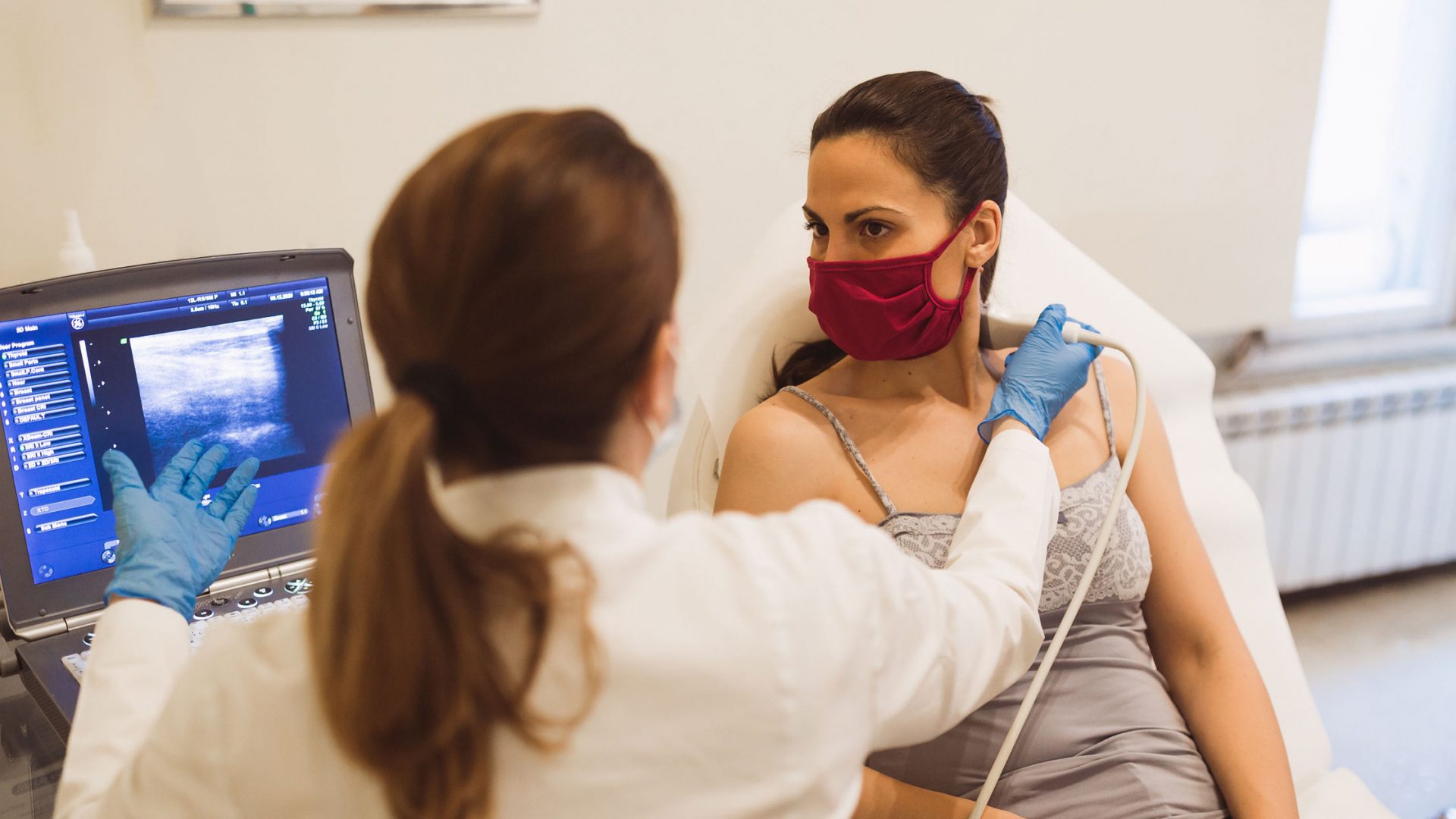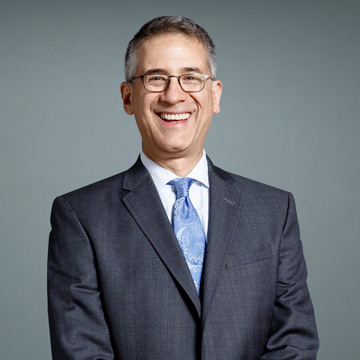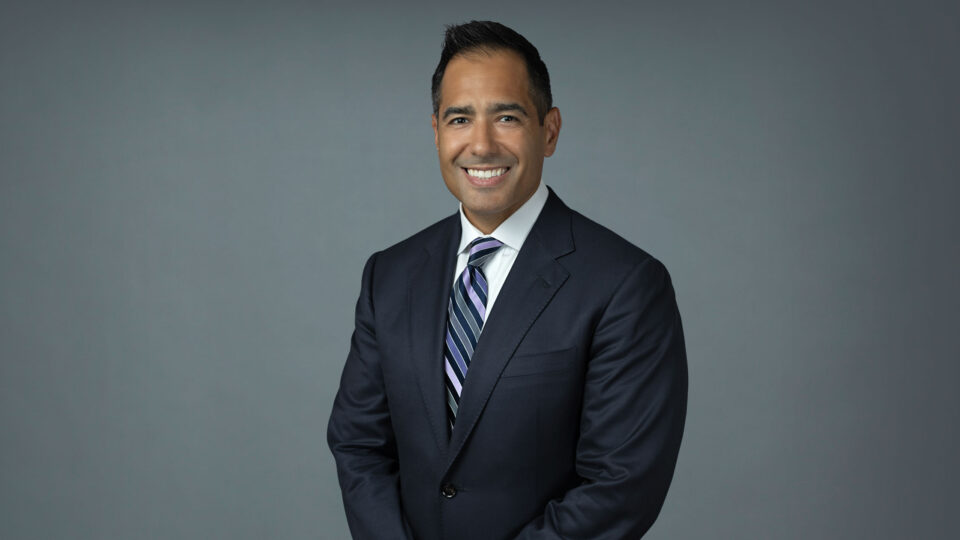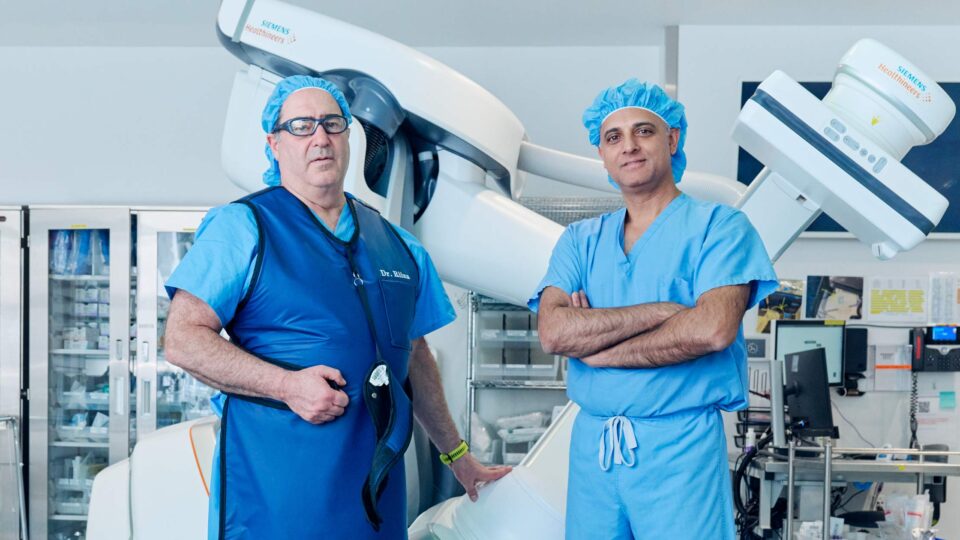In use for over a decade in Europe and Asia, radiofrequency ablation (RFA) was FDA approved in 2018 for treatment of soft tissue tumors, paving the way for use in the thyroid. In the thyroid, it is most commonly used for benign nodules or nodules that cause hyperthyroidism. Benefits include elimination or reduction of the nodule and associated symptoms, enabling patients to discontinue medications otherwise necessary to control hyperthyroidism, via a minimally invasive outpatient procedure typically performed in under an hour.
Additionally, there is accumulating evidence supporting RFA’s efficacy for small intrathyroidal cancers that otherwise would be treated with surgery, says Steven Hodak, MD, a professor of medicine in endocrinology. Both Dr. Hodak and Kepal N. Patel, MD, chief of the Division of Endocrine Surgery, are founding members of the North American Society for Interventional Thyroidology, a newly established group advocating for the use and evolution of such minimally invasive methods as RFA.
“We’re just beginning to realize how RFA can be applied to transform outcomes in complex thyroid tumor cases.”
Steven Hodak, MD
“We’re just beginning to realize how RFA can be applied to transform outcomes in complex thyroid tumor cases,” says Dr. Hodak. “It can offer clear benefits as an alternative to standard surgery in appropriately selected patients.”
Precisely Targeted Treatment
NYU Langone Health is an early adopter of RFA for thyroid tumors, among the first in a growing number of centers offering the approach in and beyond New York.
The ablation procedure involves a seven inch needle with an active electrode at the tip used to deliver high-frequency energy. The patient is usually lightly sedated. Using continous ultrasound visualization, the physician positions the needle in the thyroid nodule, where the energy is applied in a targeted manner to destroy tumor tissue without damaging surrounding structures.
“The key to success in RFA is being skilled enough to completely destroy the nodule, whether a benign symptomatic nodule, a hyperfunctioning nodule that causes hyperthyroidism, or a small cancer,” says Dr. Patel. “Completeness of treatment is the key to a good outcome.”
“Completeness of treatment is the key to a good outcome.”
Kepal N. Patel, MD
“We use something called the moving shot technique,” notes Dr. Hodak. “This involves repositioning the needle within the nodule with almost stereotactic precision, so that energy is delivered throughout the entire volume of the nodule until most or all of the tumor tissue has been destroyed.”
Dr. Hodak and Dr. Patel work in collaboration with Chelsey K. Baldwin, MD. During a procedure, one physician delivers the therapy while another physician and a medical assistant support any needs that arise during treatment.
A Promising Option for Complex Cases
The team’s first RFA case was a uniquely complex one involving a 60-year-old female patient with thyroid cancer. The patient had near complete vocal cord paralysis and a severely compromised airway. As she was considered high-risk for complete vocal cord paralysis with further surgery, her slow-growing thyroid cancer had been followed without treatment.
When the patient developed kidney failure, the active thyroid cancer precluded eligibility for the transplant waitlist. With surgery contraindicated, Dr. Hodak and Dr. Patel recommended RFA. The successful procedure completely extirpated the thyroid cancer and the patient became eligible for a renal transplant.
“It was one of the most complicated cases we’ve ever done, and it was the first,” says Dr. Hodak. “Among all patients we’ve ever treated with RFA, it illustrated the power of this approach. RFA allowed the patient to have a life-sustaining kidney transplant.”
Dr. Hodaks says that, in general, patients who have RFA report symptomatic improvement within one to two weeks. Incremental tumor reduction is typically as high as 50 percent at six months and 90 percent within one year.
Envisioning Future Applications
The team expresses confidence that RFA will continue to gain traction for a range of thyroid applications.
“RFA is exploding in the U.S. because the need for it is so appreciated,” says Dr. Hodak. “Once the reimbursement is established as we generate more outcomes data, this is going to be commonplace, broadly available and transformative.”







